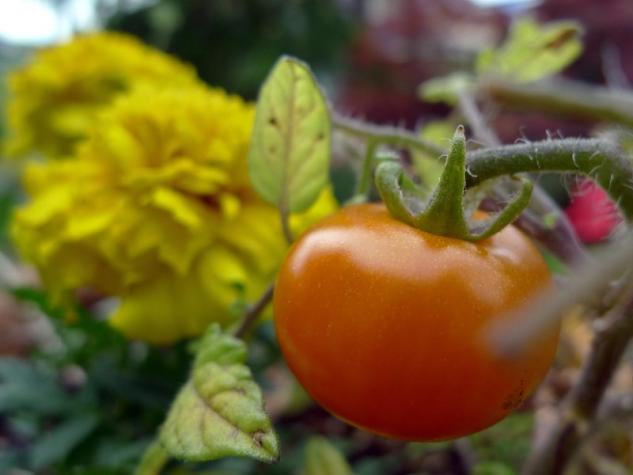Writer
Linda GeistCARROLLTON, Mo. – Some things just go together like biscuits and gravy or peanut butter and jelly.
Likewise, plants have companions that produce best when planted side by side, says Kathi Mecham, a University of Missouri Extension horticulture specialist in Carroll County.
With gardening season ahead, Mecham suggests considering how plants can benefit each other. Plan so that “function and beauty” go hand in hand, she says.
“It’s important to think of your garden as a whole, rather than as separate parts,” Mecham says.
In addition to enhancing growth and production, companion planting also helps supports natural pest control. Pests typically prefer monocultures – plants of a single variety. But you might have able to deter pests by adding plants that have a texture, smell or taste that is unappealing to insects and other pests.
“There are benefits to aromas,” Mecham says. “Consider planting between rows so that you disrupt and trick the pests.”
Pairings work well for several reasons:
Pest deterrent. Strong scents and annoying textures can keep some pests out of the garden. Planting marigolds around the perimeter of a garden may deter some pests, although there is limited science behind this. No matter what, the marigolds are aesthetically pleasing, says Mecham. Likewise, basil has been found to mask tomato plants from thrips.
Attract beneficial insects and pollinators. Some plants can provide biological control by attracting insects seeking pollen and nectar.
Beauty. Choose plants that complement each other in color, balance, scale and design. Also consider functionality of your plants – do they serve to feed wildlife or encourage pollinators?
Improved soil fertility and structure. Some legumes add nitrogen to the soil while other deep-rooted plants can move water and nutrients higher up in the soil bed.
Crop rotation. Rotate crops annually to reduce the risk of disease and insects. Crops that need high nitrogen such as leafy greens and broccoli benefit from planting where nitrogen-producing legumes grew the previous year.
The pairing of plants has long been part of folklore, but recent scientific evidence indicates there’s more to it, says Mecham. Research shows that plants communicate with one another and share messaging and resources to influence surrounding plants.
University of West Virginia Extension touts the “Three Sisters Garden.” This includes corn, which provides a natural trellis for climbing crops such as beans and peas. The legumes return nitrogen to the soil. Squash and pumpkin leaves provide weed protection.
Learn more about gardening and companion planting in articles featured on the MU Integrated Pest Management website at https://ipm.missouri.edu/search.
Trap cropping
Another companion planting practice involves planting one crop to save another crop, says Mecham.
Plant a crop that attracts insects at the end of a row or around the perimeter of the garden. Insects are drawn to these plants and leave the desired crop alone.
This is also a natural way to limit use of pesticides, says Mecham, and it is commonly used to control squash vine borer and squash bugs in squash crops.
Plant trap crops three weeks ahead of planting the desired crop.
Learn more at https://ipm.missouri.edu/MEG/2017/3/Trap_cropping.
